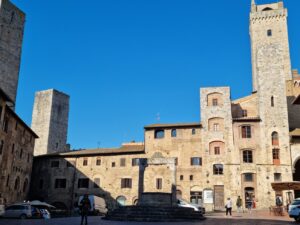Hermitage, the Rhône Valley wine appellation has launched its online wine auction, which is now open for bidding until Tuesday, June 21- 4 pm via the fine wine auction marketplace Bid For Wine https://www.bidforwine.co.uk/legendary-hermitage.
The lots available to bid on have been donated by Hermitage winemakers with some unique vintages for wine lovers and collectors.
The Centre Médical de La Teppe (France) and The Epilepsy Society (UK) are the two charities that have been chosen for the auction, with all proceeds being donated equally between the two.
Hermitage is also hosting their ‘Legendary Hermitage’ event at the Four Seasons Hotel, London, at Ten Trinity Square on Monday June 20th. The event is hosted by several of the Hermitage winemakers which includes a tasting of the prestigious cuvées available on the UK market, and a gastronomic dinner curated by award-winning chef, Anne-Sophie Pic. Chef Pic is the most decorated female chef in the world, with eight Michelin stars to her name.
Michel Chapoutier, president of the Hermitage appellation, said: “Our Legendary Hermitage event is an opportunity to share our wines with the UK wine trade, and along with our online charity wine auction, we are also helping out some charities which are important to our winemakers. We can’t wait to meet everyone and allow them to taste some exciting wines, some of which they won’t have tasted before.”
The auction lots include:
Lot 1 – Maison Les Alexandrins 2020, White – 6 bottles
Lot 2 – Christelle Betton, Arpège 2004-2011-2019, White (3 bottles)
Lot 3 – Maison M.Chapoutier, Vin de Paille 1999, Magnum
Lot 4 – Maison M.Chapoutier, Pavillon 2007, Red, Magnum
Lot 5 – Maison M.Chapoutier, De l’Orée 2007, White, Mathusalem
Lot 6 – Maison Jean-Louis Chave, Red 2015, Jeroboam
Lot 7 – Delas Frères, Domaine des Tourettes 2015, White, Jeroboam
Lot 8 – Ferraton Père & Fils – 6 bottles
Les Miaux 1998, White (2 bottles)
Les Dionnières 2001, Red (2 bottles)
Le Méal 2001, Red (2 bottles)
Lot 9- Ferraton Père & Fils – 6 bottles
Les Miaux 1998, White (2 bottles)
Les Dionnières 2001, Red (2 bottles)
Le Méal 2001, Red (2 bottles)
Lot 10 – Maison Guigal – 6 bottles
Ex-Voto 2012, Red (3 bottles)
Ex-Voto 2012, White (3 bottles)
Lot 11 – Maison Paul Jaboulet Aîné, La Chapelle 2006, Red, Jeroboam
Lot 12 – Maison Paul Jaboulet Aîné, La Chapelle 1982-1985-2009-2012-2015-2016, Red (6 bottles)
Lot 13 – Domaine des Martinelles – 6 magnums
Domaine des Martinelles 2013, Red, Magnum (2 magnums)
Domaine des Martinelles 2015, Red, Magnum (2 magnums)
Domaine des Martinelles 2020, White, Magnum (2 magnums)
Lot 14 – Gabriel Meffre, Laurus 2015, Red – 3 bottles
Lot 15 – Domaine Marc Sorrel, Le Gréal 2018, Red – 3 bottles
Lot 16 – Cave de Tain, Gambert de Loche 2015, Red, Jeroboam
Lot 17 – Maison Tardieu-Laurent 2006, White – 6 bottles
Lot 18 – Maison Tardieu-Laurent 2005, Red – 6 bottles
Lot 19 – Les Vins de Vienne, La Bachole 2010, White – 2 bottles
Lot 20 – Les Vins de Vienne, Les Chirats de Saint-Christophe 2009, Red – 2 bottles
#rhonevalley #hermitage #bidforwine #AnneSophiePic #rhonewine #wineauction #wine #redwine #whitewine #winelovers #winecollectors #wineinvestors #wineandfood #womeninfood #womeninwine #Michelinstarred #Michelin #chef #RhoneValleyWines






